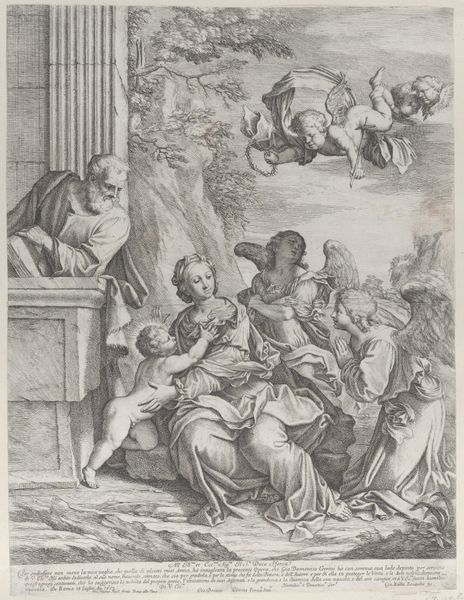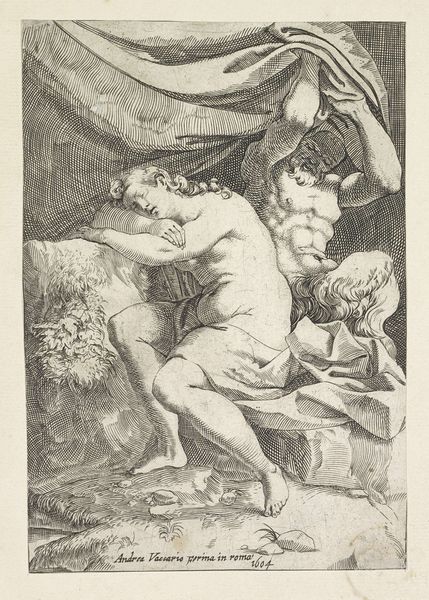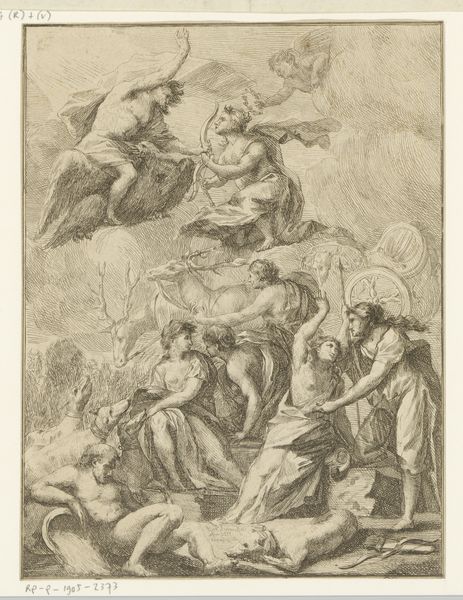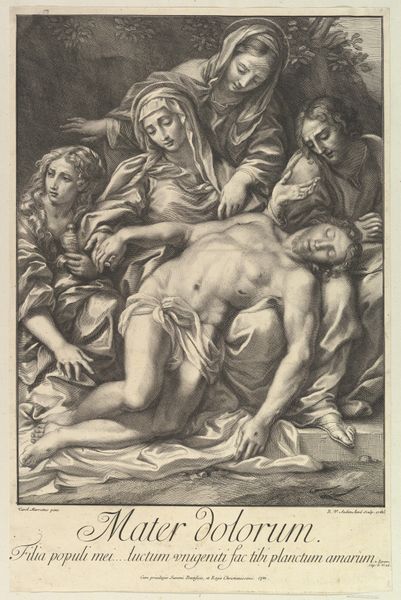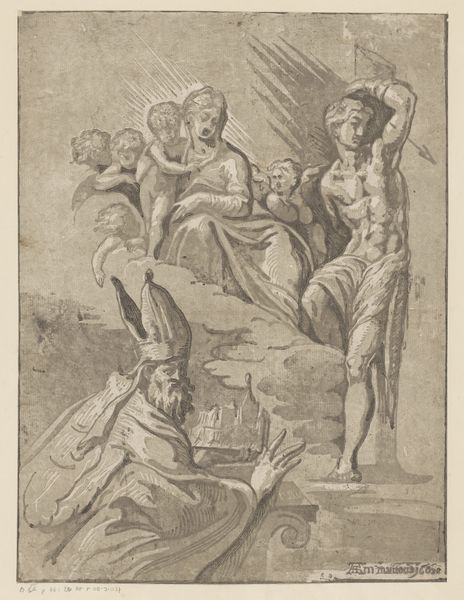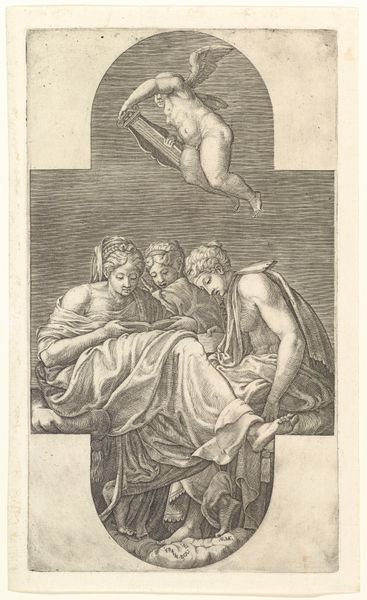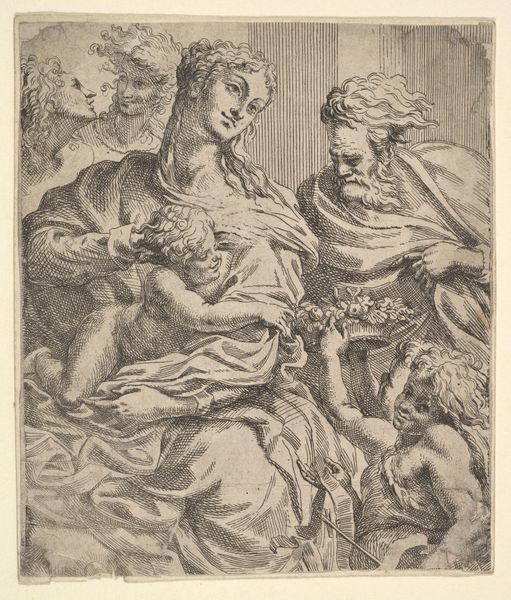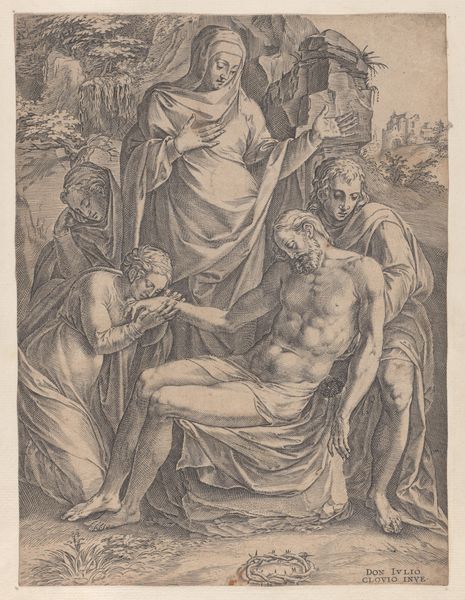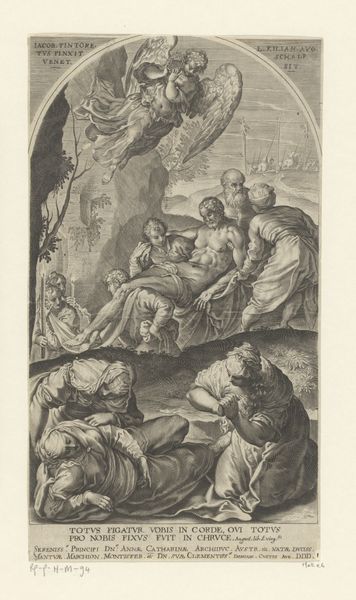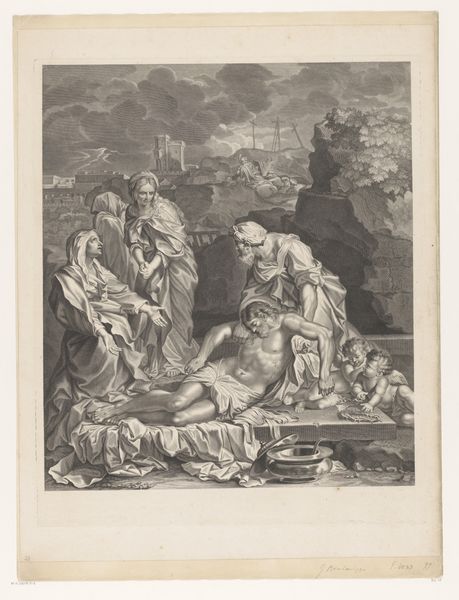
drawing, engraving
#
drawing
#
baroque
#
figuration
#
pencil drawing
#
line
#
history-painting
#
engraving
Dimensions: height 419 mm, width 320 mm
Copyright: Rijks Museum: Open Domain
Curator: Here we have a drawing, or more accurately, an engraving, titled "Bewening van Maria en twee engelen", or "The Lamentation of Mary with Two Angels" by Pietro del Po. The piece dates from sometime between 1620 and 1692, placing it squarely in the Baroque period. Editor: It's undeniably poignant. The downward gazes, the languid, almost weightless posture of Christ—it all coalesces into an image heavy with sorrow. Note also the interesting balance; the figures are positioned asymmetrically, drawing your eye across the plane of the composition from right to left. Curator: Precisely. Del Po’s masterful use of line—notice the subtle hatching to create depth and shadow—guides the viewer's eye. We see clear Baroque sensibilities: dramatic lighting effects are evident even in an engraving of this scale and material. The use of line adds dynamism and emphasizes emotional intensity. Editor: Looking beyond formal technique, the scene itself is imbued with profound religious significance. It illustrates not just the death of Christ, but Mary's acceptance and sorrow over this tragedy; her downward-turned eyes invite somber contemplation, especially during an era of religious and political conflict. It depicts loss within established conventions, a carefully calibrated piece to evoke pity. Curator: Consider, too, how the composition utilizes these classical conventions but infuses them with Baroque emotion. There's an interesting play of textures: the smooth skin of Christ contrasts with the draped folds of Mary's robes, and the coarse, linear representation of nature at the top. It directs and heightens the overall emotional impact. Editor: And the political landscape is not far removed: as such an artwork travels through Europe, its different audiences react according to established cultural expectations, or subvert them. Del Po seems aware, using the established framework to also comment on it. Curator: The piece functions beautifully as both art and a commentary on human relationships. Del Po's manipulation of light and shadow really does heighten this dramatic sensibility—captivating. Editor: Absolutely. Its historical and cultural impact is undeniable. Even separated from that context today, its impact remains potent, due in part to del Po’s exquisite technique.
Comments
No comments
Be the first to comment and join the conversation on the ultimate creative platform.

